Time To Read: 17 minutes
Arguably, the most significant development in hearing aid technology over the last few years, has been direct connectivity between hearing devices and mobile phones.
- Different kind of Bluetooth technologies
- Things you can do with Bluetooth
- Models
Arguably, the most significant development in hearing aid technology over the last few years, has been direct connection between hearing devices and mobile phones. Bluetooth has been a longstanding feature of wireless hearing aids but has previously required a ‘middle man’ device worn on the user to connect the two technologies. With the development of direct wireless hearing aid technology, we have seen more varied opportunities for utilisation, as well as increased convenience and ‘fun’ for hearing aid users. Most importantly, we have seen substantial benefit from this technology for those previously struggling to hear on the phone!
Different types Of Bluetooth Hearing aid technologies
Bluetooth classic is the type of Bluetooth found in wireless headphones, wireless speakers etc. It is by far the best sounding and most flexible type of Bluetooth for wireless audio, but it has one big issue - Battery Drain.
Hearing aids and battery drain do not mix well. If you tried to use an off the shelf Bluetooth classic chip and run that off a hearing aid battery, you might be lucky to get 20 minutes of streaming, from what I've heard.
The solution to this problem was delivered by Apple in the form of the Made for iPhone Hearing Aid (MFI) standard. This is a low power solution that can stream audio and data. The caveat is that it streams lower quality audio compared to Bluetooth Classic and only works on post 2014 iPhones and iPads.
Google has working with GN Resound to bring to light their low energy solution called ASHA (Audio Streaming for Hearing Aid). This is available now and will only work on the latest Android phones, before it slowly rolls out to the rest of the brands and models.
Sonova, who makes Phonak (their premium brand) as well as Unitron has released Bluetooth enabled hearing aids that use true Bluetooth Classic, but at much lower power. They are now on their third generation of Bluetooth capable hearing aids with the Marvel being extremely popular and the new Paradise further improving on it. There wireless hearing aids can stream audio in stereo, not only phone calls, but any audio from any Bluetooth 4.2 or higher source. This means these hearing aids work with iPhone, Android, older flip phones, most smart phones, laptops, computers etc.
You can read more about the evolution of Bluetooth hearing aids here.
Things you can do with a Bluetooth hearing aid:
- Stream phone calls directly into your hearing aids.
- Stream music, movie soundtracks or podcasts directly in stereo (mono if you are only using one aid) into your hearing aids.
- Use your phone as a remote microphone for your hearing aids (iPhone hearing aids only) .
- Get your hearing aids adjusted remotely by your clinician via your recent version Smart Phone.
- With the use of a proprietary Bluetooth stereo transmitter, get your television audio in your hearing aids directly and in stereo if two aids are used.
- Use Bluetooth accessories, such as remote microphones to hear a person from across a room or across a table (no more than 10-15m away).
- Use smart hearing aid apps on your compatible smart phone, to function as an artificial assistant, connect the aid to your smart home, get your phone calls transcribed to text in real time, invoke artificial learning and much more (Not all features available in all devices).
Below is a rundown on different hearing aid manufacturers and what their Bluetooth and direct connectivity technologies can offer you. It is important to know that many manufacturers offer their Bluetooth and direct connectivity features not just at a premium level, but in ALL levels of hearing aid technology and now even at the government funded level. This means that Bluetooth is available at different prices of hearing aids. Some styles such as the smaller Completely-In-The-Canal made for iPhone hearing aids are available from GN Resound, but Invisible-In-The-Canal hearing aids still don't support Bluetooth, nor do most hearing aids running on the smallest, size 10 battery. This is likely due to the higher battery drain this feature has associated with it as well as the need for an external antenna as Bluetooth signals cannot travel through the body.
Oticon
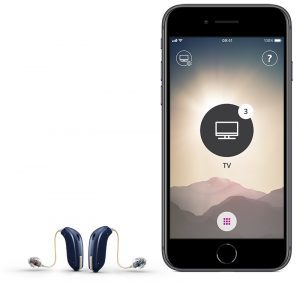 The Oticon OPN range has been around for the past couple of years and are "Made For iPhone” (MFi) hearing aids, which directly streams your phone calls and other audio sources (podcasts, music, Netflix, Skype, etc.) from your iPhone or iPad through your hearing aids;
The Oticon OPN range has been around for the past couple of years and are "Made For iPhone” (MFi) hearing aids, which directly streams your phone calls and other audio sources (podcasts, music, Netflix, Skype, etc.) from your iPhone or iPad through your hearing aids;- More recently Oticon has updated the OPN to the OPN S, which has all the same features plus a ground breaking feedback management system.
- OPN & OPN S hearing aids are compatible with the Oticon ON iPhone app, which allows the user to make volume and program changes. You can also link this to ‘IFTTT’ (if this, then that) technology, which gets your different apps and technologies working together;
- Oticon recently released their custom range of In-The-Ear devices that now also have MFi technology;
- The OPN range is also available in a rechargeable version for its MiniRite style;
- Android users require the Oticon ConnectClip to link their Android mobile phone to the OPN hearing devices.
The new Essential level Ruby 1 and 2 ranges brings this technology into much more cost effective devices. So with Oticon, you can get Bluetooth in all ranges, except the free-to-client government ranges.
Oticon also has their own remote assist feature, allowing users of these devices to request and receive hearing aid adjustments without having to attend a clinic visit.
GN Resound
- The GN Resound Quattro 3D range was released a few months ago. The MFi technology allows for direct streaming of phone calls and other audio sources from your iPhone or iPad through your hearing aids;
- Quattro 3D and LiNX 3D hearing aids are compatible with the Resound Smart 3D iPhone app. This app is one of the most sophisticated hearing aid apps on the current market and allows volume and program changes, as well as a basic graphic equaliser and the ability to create ‘favourite’ programs. There is also a ‘find my hearing aid feature’ through GPS tracking and the ability to geotag different programs for different locations e.g. your favourite café or your weekly yoga class;
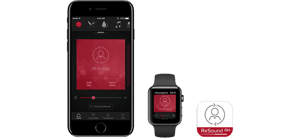
- The Resound Smart 3D app also offers ‘Resound Assist’ which is a feature that can be set up to allow your Audiologist to perform remote adjustments to fine tune your hearing aid settings without you needing to physically come into the clinic!
- The GN Resound LiNX 3D range encompasses all styles of devices i.e. Behind-The-Ear/Receiver-in-the-Canal and In-The-Ear/custom styles; while the Quattro 3D is limited to over the ear models at this stage
- The LiNX range does offers a rechargeable model only in its brand new LiNX Quattro hearing aid and the rest uses standard batteries only;
- Android users require the GN Resound Phone Clip+ to link their Android mobile phone to the LiNX hearing devices.
- ASHA is available in Quattro 3D hearing aids and allow connectivity between the hearing aids and compatible Android Phones.
Phonak
-
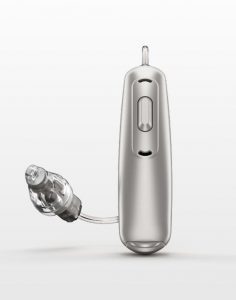 Phonak tried to even the playing field for Android and other phone users with the release of their Phonak Audeo B-Direct devices. These devices could directly connect to basically any smart phone that has Bluetooth. However, audio streaming is only to one hearing aid (selected in the software by the client/audiologist) and only allows the streaming of phone calls, not other audio sources;
Phonak tried to even the playing field for Android and other phone users with the release of their Phonak Audeo B-Direct devices. These devices could directly connect to basically any smart phone that has Bluetooth. However, audio streaming is only to one hearing aid (selected in the software by the client/audiologist) and only allows the streaming of phone calls, not other audio sources;- One of the big drawcards for this model was that it is truly ‘handsfree’ i.e. you can answer a phone call via the hearing aid itself (by pressing a button on the back of the hearing aid) and a microphone in the hearing aid picks up your voice, which means you don’t have to physically touch your phone at all;
- Audeo B-Direct hearing aids were only available in the Receiver-in-the-Canal style and with a standard battery option and turned out to be largely unsuccessful.
Now there are newer, better Bluetooth hearing aids available
The Phonak Audeo Marvel, based on the SWORD 3.0 chip was released in December 2018.
The Audeo M removed all the limitations of the Direct range of hearing aids and now allows phone call streaming to both ears as well as audio streaming from any BT 4.2 or higher source.
The Audeo M is also available even at the essential 30 level and has rechargeable options at all levels as well.
In September 2019, the Marvel received a firmware (software) upgrade that wallows it to connect directly to ROGER remote microphones, for improved hearing in noise and over distance. The update will also allow two Bluetooth classic devices to be paired at the same time, making it easier to swap between your phone and tablet for instance.
Marvel has now been superseded by the even more improved Paradise hearing aids. These hearing aids offer better overall hearing performance in general. Their Bluetooth connection has been dramatically improved and allow for two simultaneous Bluetooth connections for easy switching between devices e.g phone and computer as well as allowing 8 pairings. The connection stability is also massively improved over Marvel, while power consumption is no greater.
Starkey
- Starkey was one of the first manufacturers to offer MFi technology. The MFi technology allows for direct streaming of all audio sources from your iPhone or iPad through your hearing aids;
- Starkey Livio, Livio AI, Livio Edge AI hearing aids are compatible with the Starkey TruLink iPhone app, which allows the user to make volume and program changes, as well as geotag locations for specific programs and places;
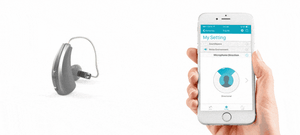
- The Starkey TruLink app is now also available for select Android mobile phones;
- Starkey have recently released their ‘Livio ’ range of hearing aids which takes direct connectivity to the next level by incorporating health and fitness tracking. Not only will these hearing aids directly stream audio sources from your iPhone or ASHA capable Android phones to your hearing aids but they will also track your physical and cognitive health, and measure your communication and engagement throughout the day.
Widex
- The Widex Moment range was released a couple of months ago and followed on from the Widex Evoke iPhone hearing aids. The MFi technology allows for direct streaming of phone calls, music and other audio sources from your iOS device through your hearing aids;
- Evoke and Moment hearing aids are compatible with the Evoke iPhone app, which allows the user to make volume and program changes, use a basic graphic equaliser, geotag, create personal programs and use Widex’s latest development – ‘SoundSense Learn’.
- SoundSense Learn is a real-time based learning system, which allows users to fine tune their hearing device settings by listening to ‘A vs. B’ sound comparisons to create a more individualised listening experience;
- The Moment range with iPhone streaming is only available in the Receiver-in-the-Canal style, which is also available in a rechargeable version for convenience;
- Android users can use the Widex app but direct streaming of audio sources is not possible and would require use of Widex’s ‘DEX’ devices.
Unitron
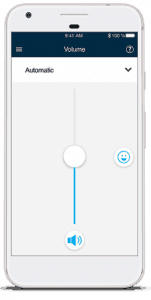 The Unitron Discover and Discover Next devices can directly connect to basically any smart phone that has Bluetooth. Like the Phonak Audeo Marvel it can stream audio and phone calls to both ears from Android phones as well as iPhones.
The Unitron Discover and Discover Next devices can directly connect to basically any smart phone that has Bluetooth. Like the Phonak Audeo Marvel it can stream audio and phone calls to both ears from Android phones as well as iPhones. - Again, one of the big drawcards for this model is that it is truly ‘handsfree’ i.e. you can answer the phone call via the hearing aid itself by pressing a button on the back of the hearing aid and a microphone in the hearing aid picks up your voice, which means you don’t have to physically touch your phone at all;
- They are available in battery and rechargeable versions
Signia
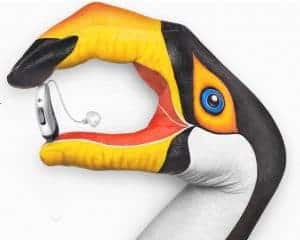 The Signia X and older Nx range of Bluetooth hearing aids offers iPhone connection for direct streaming of phone calls and other audio sources from your iOS device to many styles of hearing devices. Unfortunately, the size 10 battery styles such as the Silk and Pure 10. The newer Styletto Connect, does however feature made for iPhone connection.
The Signia X and older Nx range of Bluetooth hearing aids offers iPhone connection for direct streaming of phone calls and other audio sources from your iOS device to many styles of hearing devices. Unfortunately, the size 10 battery styles such as the Silk and Pure 10. The newer Styletto Connect, does however feature made for iPhone connection.- Signia X and Nx hearing aids are compatible with the ‘Signia myControl’ iPhone app, which allows the user to make volume and program changes, has ‘motion sensor data’ to ensure the best hearing quality while a user is moving, and tracks noise and voice activity;
- Android users can use the Signia app but direct streaming of audio sources is not possible and a Signia ‘Streamline Mic’ is required.
Evidently, iPhone users are the ‘winners’ at this point in time but we hope to see improved usage options for Android users in the near future. We expect to see more features surrounding health, fitness and communication tracking to become more prevalent as new releases emerge from manufacturers. Keep your eyes peeled and your ears open!
Contact Value Hearing on 1800 157 429 to book in for a discussion with an Audiologist and find out which option would suit you and your hearing needs best!
Further reading
- How To Troubleshoot Hearing Aids
- How To Clean Your Hearing Aids
- The Truth about Bluetooth (and radiation)
- What to expect from Bluetooth Hearing Aids
- Can my Bluetooth Hearing Aids get hacked?
- How we ensure your experience is consistent
- What you need to know about Hearing Aid Insurance
- Reduce clinic visits without sacrificing outcomes
- Do I really need such an expensive hearing aid?
If you've been shopping around for hearing aids and are perhaps feeling overwhelmed with the amount of options out there, then you may like to read our comprehensive Hearing Aid Buyers Guide eBook. It's packed full of useful information and advice to make sure the hearing aids you choose will work well for you now and into the future, without costing a fortune.

